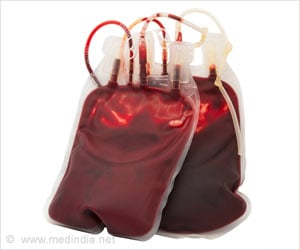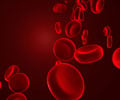- About Blood Transfusion - (https://www.nhlbi.nih.gov/health/health-topics/topics/bt)
- Blood transfusion - (http://www.nhs.uk/conditions/blood-transfusion/pages/introduction.aspx)
- History of Blood Transfusion - (http://www.redcrossblood.org/learn-about-blood/history-blood-transfusion)
- Adverse effects of transfusion - (http://www.rch.org.au/bloodtrans/adverse_effects/adverse_effects_of_transfusion/)
- Promethazine Hydrochloride - (http://www.drugs.com/monograph/promethazine-hydrochloride-antihistamine.html)
- A Patient's Guide to Blood Transfusions - (http://my.clevelandclinic.org/services/all/hic-a-patients-guide-to-blood-transfusions)
What is a Blood Transfusion?
The blood of the recipient and donor is matched for the type of blood group and cross-matched for antibodies to check compatibility. A number of tests are carried out on the donor’s blood before it is transfused to the recipient. These tests include screening for Coombs test to check antibody-antigen reactions, HIV and AIDS, hepatitis B and C and human T-cell lymphotropic virus (HTLV).
In a blood transfusion, the recipient usually receives packed red blood cells while the other components of blood like plasma are separated via a centrifugal and washing procedure. Usually a leukocyte filter is used during the procedure if the recipient does not require white blood cells. A blood transfusion increases the hemoglobin (Hb) levels of the recipient.
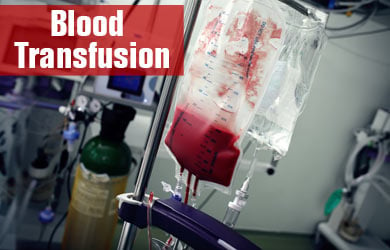
History of Blood Transfusion
The first successful blood transfusion happened in 1665 when the British physician Richard Lower kept a dog alive by transfusing blood from other dogs. In 1818, the first human blood transfusion happened when the British obstetrician James Blundell transfused blood to a patient for treating postpartum hemorrhage.
It was the 20th century that saw the refinement of this procedure when Karl Landsteiner, an Austrian physician discovered the first three human blood groups. Reuben Ottenberg performed the first blood transfusion after blood typing and cross-matching.
The Rh blood group system was discovered by Karl Landsteiner, Alexander Wiener, Philip Levine and R.E. Stetson.
Significant milestones included testing of blood for HIV-1 and HIV-2 antibodies in 1992. In 2002, the Food and Drug Administration (FDA) licensed the Nucleic Acid Amplification Test (NAT) for HIV and Hepatitis-C virus.
Procedure
During the procedure, a hypodermic needle or cannula is inserted in a vein either near the elbow or the wrist. This is then connected to the blood for transfusion. The procedure usually takes around 3-4 hours during which time the patient is monitored for adverse reactions. In some cases, the patient may present with reactions such as mild fever, itching and hives, headache and nausea. Usually an antihistamine such as promethazine hydrochloride (Phenergan®) is administered to counter the adverse effects.
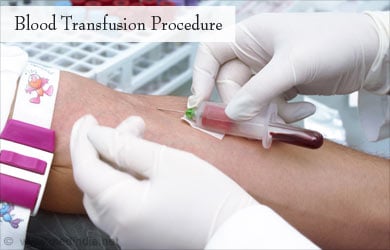
The entire procedure is usually monitored by a nurse. One can take a blood transfusion either lying down or sitting. After the transfusion, the needle and IV line are removed. One may develop a tiny bruise with some mild swelling in the area. A plaster is usually required for some time. Swelling and bruising usually go away on its own. In some cases, a heparin sodium gel (Thrombophob®) may be prescribed if the swelling is painful. This will reduce the swelling and ease the circulation.
A blood transfusion is usually a daycare procedure unless the patient has been hospitalized for sickness or surgery.
When is a Blood Transfusion Required?
The normal Hb range for men is between 13.5 to 17.5 grams per deciliter. For women, the normal range is between 12.0 to 15.5 grams per deciliter.
A blood transfusion becomes necessary when a person loses blood in an accident, childbirth or surgery. Blood transfusion is also required when anemia is present and the patient has failed to respond to other treatments. People with inherited blood disorders like thalassemia, sickle cell anemia and diamond-blackfan anemia require lifelong blood transfusions for survival.
Blood Safety
Every country has blood safety legislations. In India, the National Aids Control Organization (NACO, Department of Health and Family Welfare) is primarily responsible for regulating blood safety, blood collection, blood banks and testing.
Some of NACO’s aims include:
- Making safe blood available within an hour of the requirement.
- Raising voluntary donation to 90% from the existing 52%.
- Stringent quality control for blood screening.
- Quality transfusion management.
- Set up model blood banks.
- External accreditation for blood banks.
If one is receiving a transfusion, make sure of quality by insisting on checking for stringent cross-matching and screening for HIV, Hepatitis B and C and HTLV. Go for voluntarily donated blood or request friends and relatives to come forward to donate.
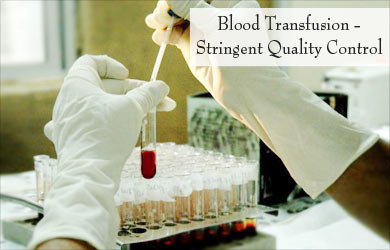
Blood Transfusion Alternatives
Researchers have been working on producing synthetic blood which will be relatively risk free and safe.
In some cases before surgery or medical procedures, one can go for autologous blood transfusion where the patient’s blood is collected and then re-transfused after surgery. This helps avoid the risks from blood transfusion. However, this may not always be a feasible alternative.
There are certain medications available to stimulate the production of red blood cells in the bone marrow. This is known as erythropoietin. People who undergo hemodialysis and suffer from low Hb usually take this medication.


